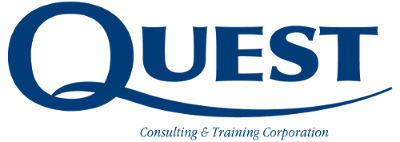Introduction
Today, hard work, good products, and growing markets aren’t enough to guarantee success: businesses must continually improve their products and services, continually innovate, and continually anticipate, identify, and meet new customer needs.
To achieve these goals, managers and professionals must promote continuous learning and problem solving within their organizations, and apply best practices to improve everything they do. To that end, the Six Sigma Training Workshop offers advanced training in both process improvement and quality-related problem solving.
Six Sigma has a proven track record as a tool for achieving operational excellence. This workshop will provide participants with knowledge of both the theories and techniques utilized in Six Sigma environments to build and sustain superior performance. The workshop can be tailored to any organization’s needs, reflecting what employees have already learned, as well as current objectives for improvement.
Six Sigma Workshop
This is a highly interactive training workshop that typically runs 40-48 hours, and covers the following Six Sigma theories and methods:
| Item | Subject |
| 1 | Introduction to Six Sigma DMAIC |
| 2 | Understanding Variation, Process Capability |
| 3 | Process Mapping |
| 4 | Study of Cycle Time |
| 5 | Quality Improvement Tools |
| 6 | Process Control Tools |
| 7 | Failure Modes and Effects Analysis |
| 8 | Measuring System Evaluation (Gauge R&R) |
| 9 | Design of Experiments |
| 10 | Implementation of Six Sigma |
Each of the workshop subjects listed above corresponds to a session that includes objectives and goals, questions and answers, and hands-on exercises and experiments designed to reinforce learning.
The material covered in each session will be as follows:
- Introduction to Six Sigma
In this session, we review the training plan for the entire workshop, and then present the following topics:- The origins of Six Sigma
- What Six Sigma is, and what it is used for
- The benefits of Six Sigma
- Who uses Six Sigma
- Understanding Variation, Process Capability
This module prepares participants for every topic that follows. It introduces all essential terms, equations, calculations, and interpretations of variation and process capability. The following subjects are discussed in detail, and supported by examples and classroom exercises:- Variation, including different types of variation
- Normal distribution, mean, and standard deviation
- How variation leads to defects and costs
- How variation can be measured
- Process capability
- Process Mapping
Process mapping is a vital part of every problem solving and quality improvement effort. This session explains why process mapping is so important, and introduces each type of process map. - Study of Cycle Time
Cycle time studies build on the knowledge gained from process mapping, offering powerful insights that can be used to improve productivity and efficiency, and reduce cost. In this session, participants will learn methods used to identify waste and non-value-added activities in a process; and learn how to establish a baseline for improvement efforts. - Quality Improvement Tools
Quality improvement tools are the foundation of the problem solving and quality improvement process. Although team-building is not the focus of this workshop, the quality improvement process represents a sizable portion of many team activities. To support teams working on quality improvement, this session reviews best practices for problem solving, as well as tools that teams can use to become more effective throughout every step of the quality improvement process. Discussions will focus on “how to’s” – including how to select a problem or improvement to focus on; how to analyze and understand your challenge more clearly; how to generate ideas for addressing that challenge; how to plan improvement and implementation; and how to overcome common pitfalls to quality improvement. - Process Control Tools
This session will focus on understanding process control charts for both variable and attribute-type data. Topics covered include: how and when to collect data; components of control charts; criteria for control chart selection; mean and control limits calculations; data interpretation; trends; and pitfalls in using control charts. - Failure Modes and Effects Analysis (FMEA)
The session demystifies FMEA, one of today’s powerful tools for improving the quality and reliability of products and services. It covers all FMEA components, including failure mode identification, quality risk assessment, and implementation of preventive measures. Practical FMEA applications will be discussed in detail, and supported by hands-on exercises designed to reinforce learning. - Measurement System Evaluation (MSE)
The session focuses in detail on variation in the measurement process, and reviews techniques for detecting the sources of this variation. Participants will learn how to use information from MSE studies to improve the reliability of their measurement systems, as well as overall product quality. Note: MSE is also known as “Gauge Repeatability & Reproducibility” (Gauge R & R). - Design of Experiments (DOE)
DOE is an advanced statistical tool intended to identify the specific experiments that should be performed to evaluate a problem or an improvement solution. This session discusses DOE’s principles, methods, and common applications. Simple hands-on experiments are then used to reinforce the concepts that have been introduced. - Implementation of Six Sigma
The final part of the workshop begins with a quick review of the material covered during previous sessions. Participants are then grouped into small teams, and each team is assigned a case. Teams will use the knowledge gained from the workshop to analyze their cases, and present solutions and improvement plans.
In some customized courses, groups may already be working on projects throughout the entire training course; in this session, they present their projects.
The session and the workshop conclude with a discussion about successfully implementing Six Sigma thinking within organizations: both “how to implement” and “where to start.”
